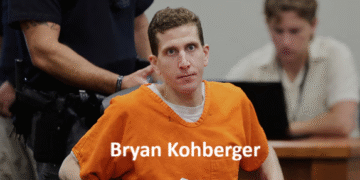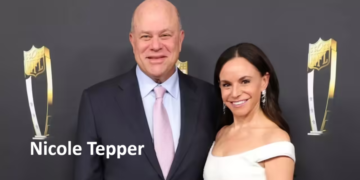John Travolta. The name conjures images of a swaggering Tony Manero under the glittering disco ball, the cool greaser Danny Zuko, and the enigmatic hitman Vincent Vega. John Travolta has not just been a movie star; he has been a cultural phenomenon, a chameleon who has danced his way through decades of Hollywood, experiencing both dizzying heights and challenging lows. His journey from the king of the disco era to a respected Hollywood legend is a testament to his talent, resilience, and enduring appeal. This article delves into the unique trajectory of John Travolta‘s career, exploring the pivotal moments that shaped his stardom and solidified his place in cinematic history.
Early Steps and the Television Breakthrough:
Born in Englewood, New Jersey, in 1954, John Travolta was the youngest of six children in a family with a strong artistic inclination. His mother, an actress and drama teacher, nurtured his early interest in performing. By the age of 16, driven by an unwavering passion, he dropped out of high school to pursue his dreams in New York. He honed his skills in off-Broadway productions, commercials, and even ventured into pop music, releasing a few singles.
A significant turning point came in 1975 with the ABC sitcom “Welcome Back, Kotter.” As Vinnie Barbarino, the charismatic leader of the remedial “Sweathogs,” John Travolta became a teen idol. His portrayal of the confident yet slightly naive high schooler resonated with audiences, making him a household name and launching a wave of merchandise bearing his likeness. Simultaneously, his pop single “Let Her In” climbed the Billboard charts, showcasing his multifaceted talent. This period established John Travolta as a prominent figure in popular culture, setting the stage for his transition to the silver screen.
Saturday Night Fever: Defining a Generation:

While he had minor roles in films like “Carrie” (1976), it was 1977’s “Saturday Night Fever” that catapulted John Travolta to international superstardom. As Tony Manero, a young Brooklynite who finds escape and validation on the disco dance floor, John Travolta embodied the energy and aspirations of a generation. The film became a cultural touchstone, igniting the disco craze worldwide and cementing John Travolta‘s status as a cinematic force. His electrifying dance sequences, set to the iconic Bee Gees soundtrack, were mesmerizing and earned him his first Academy Award nomination for Best Actor, making him one of the youngest nominees in the category at the time. The image of John Travolta in his white polyester suit became an indelible symbol of the 1970s.
Grease and Urban Cowboy: Riding the Wave of Success:
Riding the wave of “Saturday Night Fever”‘s phenomenal success, John Travolta starred in another cultural phenomenon, the 1950s-set musical “Grease” (1978). As the greaser heartthrob Danny Zuko, opposite Olivia Newton-John’s Sandy, John Travolta further solidified his appeal. The film was a massive box office hit, and the soundtrack, featuring duets like “You’re the One That I Want” and “Summer Nights,” became one of the best-selling albums of all time. John Travolta‘s performance showcased his versatility, seamlessly blending his acting, singing, and dancing talents.
In 1980, he took a different turn with “Urban Cowboy,” a film that sparked a nationwide country music craze. While commercially successful, these roles arguably began to typecast John Travolta as a certain kind of charismatic, dance-oriented leading man.
The Lean Years and the Pulp Fiction Renaissance:

The 1980s saw a decline in John Travolta‘s critical and commercial success. Films like “Staying Alive” (1983), the sequel to “Saturday Night Fever,” and “Perfect” (1985) failed to resonate with audiences and critics. Despite a brief resurgence with “Look Who’s Talking” (1989), John Travolta‘s career seemed to have plateaued. He even reportedly turned down leading roles in films that went on to become major hits, such as “American Gigolo” and “An Officer and a Gentleman.”
However, in 1994, John Travolta experienced one of the most remarkable comebacks in Hollywood history with Quentin Tarantino’s “Pulp Fiction.” His portrayal of Vincent Vega, a laconic hitman with a penchant for philosophical musings and unexpected dance moves, was a revelation. The role earned him his second Academy Award nomination and revitalized his career, introducing him to a new generation of moviegoers and reminding older audiences of his undeniable talent. “Pulp Fiction” not only resurrected John Travolta‘s career but also significantly impacted independent cinema and popular culture.
A New Chapter: Versatility and Enduring Presence:
The success of “Pulp Fiction” ushered in a new era for John Travolta. He shed the disco king image and embraced a diverse range of roles, proving his versatility as an actor. He garnered critical acclaim for his performances in films like “Get Shorty” (1995), for which he won a Golden Globe, “Face/Off” (1997), “Primary Colors” (1998), and “A Civil Action” (1998). He continued to take on challenging and unexpected roles, including a villain in “Swordfish” (2001) and Edna Turnblad in the musical adaptation “Hairspray” (2007), showcasing his willingness to push boundaries and embrace different genres.
Throughout his career, John Travolta has also nurtured a deep passion for aviation. A licensed pilot, he owns several aircraft and even resides in a community with its own runway. His dedication to flying is a significant part of his life outside of acting.
Personal Life and Legacy:

John Travolta married actress Kelly Preston in 1991. They had three children: Jett (who tragically passed away in 2009), Ella Bleu, and Benjamin. Kelly Preston passed away in 2020 after a battle with breast cancer. Their relationship was a significant part of John Travolta‘s life, and he has often spoken about the importance of family.
John Travolta‘s career is a captivating story of talent, perseverance, and reinvention. From the electrifying energy of the disco era to the nuanced performances of his later career, he has left an indelible mark on Hollywood. His iconic roles continue to resonate with audiences, and his ability to adapt and evolve has ensured his enduring presence in the entertainment industry. John Travolta is more than just a movie star; he is a true Hollywood legend whose contributions to cinema have solidified his place in popular culture for generations to come.
(FAQs) About John Travolta
Q1 What was John Travolta’s breakthrough role?
John Travolta’s breakthrough role was as Tony Manero in the 1977 film “Saturday Night Fever.” This role catapulted him to international stardom and defined the disco era.
Q2 How did Pulp Fiction revive John Travolta’s career?
John Travolta’s portrayal of Vincent Vega in Quentin Tarantino’s “Pulp Fiction” (1994) was a critical and commercial success. It showcased a different side of his acting abilities and earned him his second Academy Award nomination, re-establishing him as a major Hollywood actor after a period of less successful films.
Q3 What are some of John Travolta’s most iconic movies?
Some of John Travolta’s most iconic movies include “Saturday Night Fever,” “Grease,” “Urban Cowboy,” “Pulp Fiction,” “Get Shorty,” “Face/Off,” and “Hairspray.”
Q4 Is John Travolta a pilot?
Yes, John Travolta is a passionate and licensed pilot. He owns several aircraft and is actively involved in the aviation community. He has even served as the “Official Ambassador of Aviation” for the Living Legends of Aviation Awards.
Q5 What is John Travolta known for besides acting?
Besides acting, John Travolta is also known for his singing and dancing abilities, which were prominently featured in “Saturday Night Fever” and “Grease.” He is also a dedicated aviator with a passion for flying.
For More Information Visit Bratish Magazine

















































































